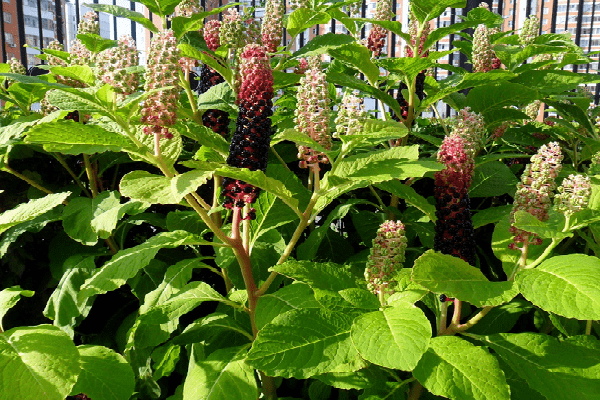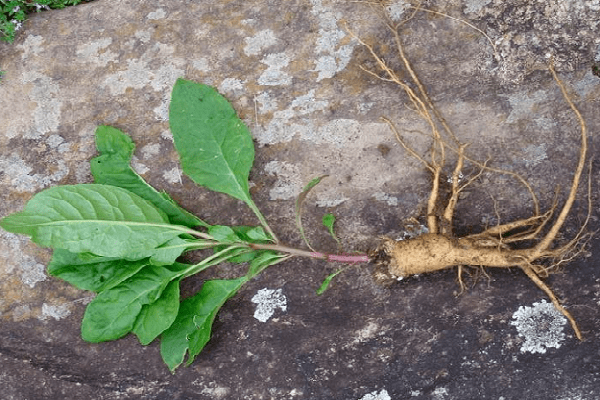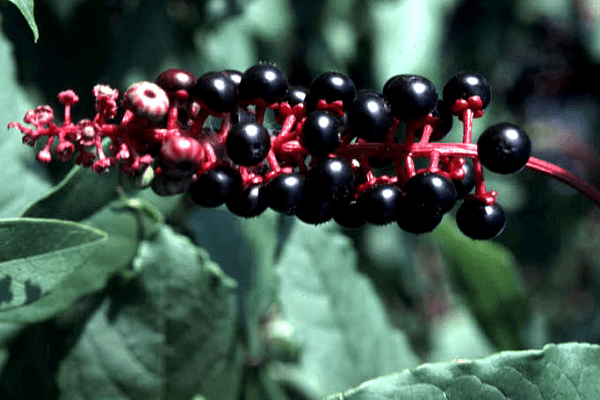Plants with a healing effect >>>> Phytolacca - medicinal properties and use in medicine
Phytolacca - medicinal properties and use in medicine.

American Lakonos (the botanical name of the plant Phytolacca) is a popular ornamental plant from South America, which is becoming increasingly common in other regions with a temperate climate, but not only for its beautiful appearance.
Although the attractive appearance of the plant during the flowering and fruiting period puts it on a par with a variety of decorative tall shrubs, Phytolacca is more and more interested in its medicinal properties. Despite the fact that the berries of the plant have an outwardly appetizing appearance, located in clusters in candle-shaped inflorescences, it is not the berries that have a healing effect, but the roots and leaves of Phytolacca.


But do not rush to apply parts of the plant inside (neither berries, nor leaves, nor roots) - in their raw form, they are all poisonous to varying degrees, since they contain poisonous substances that can cause at least nausea and a vomiting reflex. And the danger is convulsive syndrome and respiratory paralysis with a fatal outcome, which can be triggered by eating berries, leaves, shoots and roots without prior heat treatment.
Raw shoots and roots are especially poisonous. Roots for medicinal purposes are harvested during the period when the color of the core of the root acquires a pronounced yellow color, in earlier periods of collection, if the plant has a reddish root on the cut, it is not suitable for consumption, since during this period of growth it contains high concentrations of substances harmful to the body. The roots and leaves are dried, crushed and tinctures are prepared from them. Herbal tinctures from the roots, leaves and stems of Phytolacca are used externally as applications, compresses, baths on the skin and mucous membranes as an antiseptic, wound healing agent, for example, for baths for skin diseases, hemorrhoids, infections and inflammations of the urogenital area.


Attention! Inside the tincture of the root, Phytolacca is used only if the extract from the root is produced industrially. Phytolacca is used for medicinal purposes as a tincture of the plant root as a laxative, as well as antiseptic and anti-inflammatory. For infectious diseases of the mouth and throat, rinse with infusions of Phytolacca roots (without swallowing) is used. The rest of the plant for medicinal purposes should be used exclusively for external use - tinctures from dried leaves are suitable for baths and compresses.
Tinctures and compresses are used with caution in cases where a person has allergic and sensitive skin, since the components of the plant can have an irritating effect on the skin and mucous membranes (rather persistent). It is for this reason that it is customary to collect plant components for blanks with protective gloves.
Despite the fact that the chemical composition of the Phytolacca plant contains a complex of useful vitamins and trace elements, they are destroyed during heat treatment, and only young shoots of the plant in cooked form, which taste like boiled asparagus shoots, can be used for food.
The Phytolacca plant has very attractive berries for eating, but not all Phytolacca varieties have edible berries (the Phytolacca Grape berries are edible, which has round-shaped whole berries) - they can be eaten only in boiled form and in very small doses.
Phytolacca berries have no medical significance, but the juice of these berries is used by residents of the regions where Phytolakka comes from as natural dyes for coloring dishes of side dishes, soups, meat, fish, seafood, as well as household dyes for fabric, paper, wool threads , flax and cotton (it turns out a pink - purple hue). But the most popular use is berry juice and Lakonos berries themselves for coloring canned products (vegetables), as well as spices in pickles to give canned vegetables a tart taste. The juice of the boiled berries of the plant is also used for coloring alcohol products, vinegars, and wines.

Read

Read



























